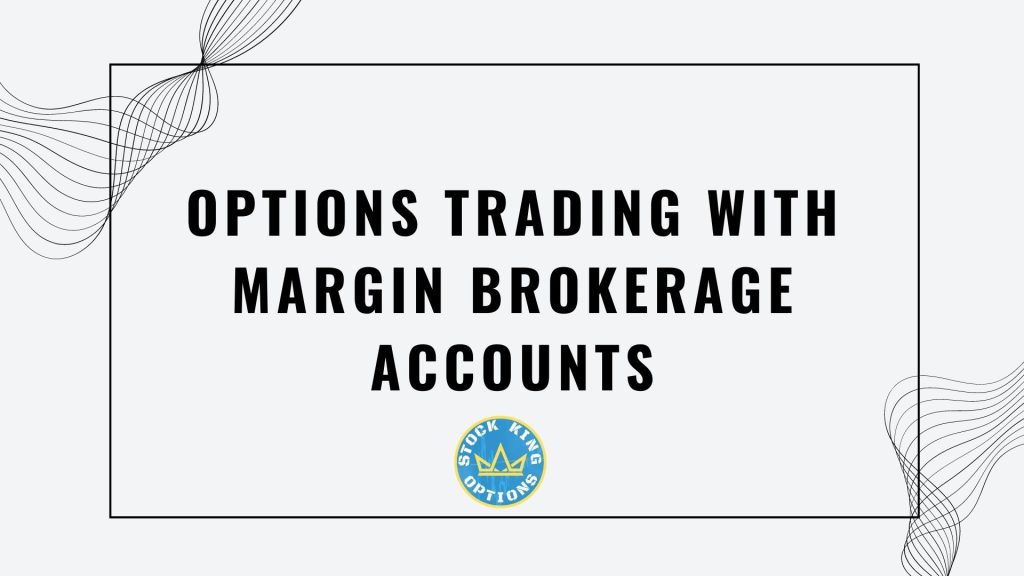
Do you want to possibly increase your earnings in the stock market? Have you considered options trading or service with a margin brokerage account? This approach might seem like an uphill at first, but it has a lot to offer seasoned traders seeking better returns. We’ll go over what options trading is and how it works with a margin brokerage account, as well as some tips and strategies for effectively navigating these markets. So grab your notebook and get ready to learn more about this exciting investment opportunity!
Effectively Leverage Margin Account in Options Trading
When it comes to options trading, one of the most important things to remember is the part that margin plays. A margin account with a broker allows you to trade with leverage, which can give you an edge in the market. However, understanding how margin functions and how to use it effectively is critical.
Here are a few tips on how to effectively leverage your margin account in options trading:
Use stop-loss orders: To protect yourself from possible losses when trading with leverage, use stop-loss orders. A stop-loss order is an order placed with your broker to sell an asset when it reaches a certain price. This price is typically below the current market price, so if the market falls sharply, your losses will be limited.
Manage your risk: When using leverage, it’s important to manage your risk carefully. You should only put up as much capital as you’re comfortable losing. Remember that leveraged positions can both increase your profits and losses.
Use limit orders: Another way to manage your risk when trading with leverage is to use limit orders. A limit order is an order placed with your broker to buy or sell an asset at a certain price. This price can be made to be either higher or lower than the current market value, giving you influence over the amount at which you’re willing to buy or trade an asset. Review your positions regularly
Requirements for Margin Accounts
To establish a margin account with a brokerage, you must put a minimum quantity of money, which is usually $2,000. Some brokerages may require more or less depending on their policies. This deposit is known as the initial margin and it acts as collateral for the loan that the brokerage provides you for options trading.
The maintenance margin is the minimum amount of equity that must be maintained in the account in order to keep the account open and avoid a margin call. The maintenance margin is usually set at 25% of the total value of the securities in your account. So, if your account worth fell below $1,500 as a result of falling stock values, you would receive a margin contact from your broker instructing you to add more money to your account or sell some of your securities.
If you don’t meet the requirements for a margin account, you can still trade options with a cash account. A cash account requires that all payments for trades be made with available funds; no credit is extended by the brokerage. This implies that you can only buy options if you have enough money in your account to cover their entire cost. While this may limit how much you can trade, it does provide some protection against losses since you can’t get into debt with a cash account.
Balancing Risk and Reward in Options Trading with Margin Accounts
When it comes to options trading, balancing risk and reward is essential. And one of the best ways to do that is by using a margin account.
A margin account lets you trade with borrowed money, which can give you extra buying power and potentially higher profits. But it also comes with more risk, so it’s important to use it wisely.
Here are a few things to keep in mind when using a margin account for options trading:
Know the risks. Before using margin, be sure to understand the risks involved. Margin can magnify losses, so it’s important to only use it if you’re comfortable with the potential downside.
Use stop-loss orders. A stop-loss order is an important tool when trading with margin. It lets you exit a trade automatically if it starts to go against you, helping to limit your losses.
Manage your position size. When using margin, it’s important to manage your position size carefully. Taking on too much risk can lead to big losses, so make sure you’re comfortable with the amount of money you’re putting at risk.
Keep an eye on your account balance. It’s also important to monitor your account balance when trading with margin, regardless of what service your following. If your account falls below a certain level, you may be required to add more money or close out some of your positions.




